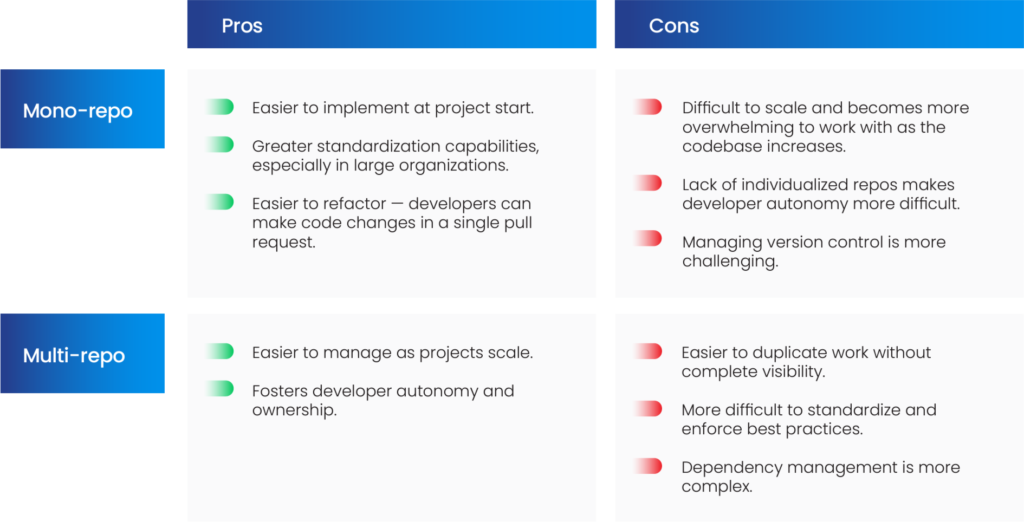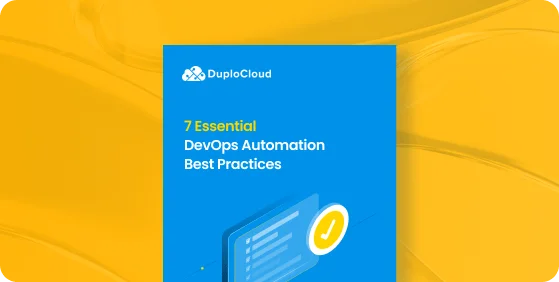Improve deployment speeds, reduce errors, build better development habits, and deliver higher-quality products through the automation of routine DevOps tasks
Introduction
When Amazon CTO Werner Vogels coined the phrase, “You build it, you run it,” he ushered in a new era of software development: DevOps.
By entrusting the engineers who build the product to also maintain and update it, DevOps ensures organizations maximize operational efficiency and respond to customer needs while keeping costs manageable.
The key to DevOps success is automation. Some surveys show that DevOps teams spend as much as 15 hours — nearly 40% of their work week — on manual tasks such as debugging pipelines. Learning how to automate these routine tasks gives this time back to the developer, allowing them to perform more valuable work: implementing new features, enhancing security, responding to customer feedback, and so on.
The benefits of successful DevOps automation are staggering and provide many short-term and long-term benefits, including:
- Increased development speed.
- Decreased time to market.
- Reduction in human error.
- Improved customer service.
- Enhanced security and compliance adherence.
- Increased cost savings.
The following seven DevOps automation best practices provide insight into what you should automate, what to consider when building your development pipelines, and much more. These tips will help foster good DevOps habits, improve processes and workflows that will enhance your team’s productivity, and increase the quality of your overall product.
#1) If You Can Automate It, Automate It
With DevOps, speed, accuracy, and consistency are crucial. Manual work is slow and prone to human error, so automation is the only way to achieve these goals in a way that can scale. But what should be automated?
In short, everything. If a process within the DevOps pipeline can be automated, it should be. Examine elements of your workflow that require accuracy, take a long time to complete, or are repeated often, such as:
- Infrastructure provisioning.
- Configuration management.
- Lifecycle management.
- Code check-ins and version control.
- Quality assurance, security, and compliance testing.
- Integration and deployment.
There are numerous tools available to aid in DevOps automation. Each one specializes in automating a specific subset of important tasks. Integrating these essential tools into your DevOps workflow will ensure your automation efforts provide maximum coverage:
- DuploCloud: Automate infrastructure configuration and provisioning to speed up development and deployment times.
- Docker: Build and manage containers for packaging applications to run in various environments.
- Kubernetes: An open-source tool that automates the deployment, management, and scaling of containerized applications.
- GitHub: Robust version control implementation to automate code check-in and release to production.
- Terraform: Automate configuration and policy enforcement through Infrastructure-as-Code (a scripting language).
- Selenium: Detect bugs and code regressions with automated testing across parallel virtual machines.
#2) Everything Fails, So Plan Ahead and Monitor Performance
This is not meant to be a scare tactic but rather a simple fact of DevOps life: on a long enough timeline, your tools, systems, and products can and will fail. DevOps teams must plan with this mantra in mind to ensure they have built the redundant systems necessary to maintain availability in case of an outage.
Plus, knowing that everything fails will help teams weigh the cost of preparation against the risk of failure. If DevOps can quickly remedy a system failure without incurring significant costs or exposure to security risk, sometimes allowing for failure is the right call — especially if preventing that failure costs significantly more than the failure itself.
To mitigate the chance of failure, ensure that you monitor performance throughout the DevOps stack. Performance monitoring tools will help you keep tabs on unforeseen issues, significant fluctuations in traffic, and malicious actors attempting to gain entry while helping you discover potential areas for improvement. Active 24/7 monitoring will allow you to set up an alert system, which is crucial for responding to and mitigating emergencies.
These tools will also provide you with hard data through printable reports. When it’s time to scrutinize development budgets, these reports will help you prove that the money spent provides tangible results.

#3) Implement Continuous Integration/Continuous Delivery Pipelines to Further Aid DevOps Automation
Rapidly delivering high-quality code requires automating steps within continuous integration and continuous delivery (CI/CD) pipelines. Automating these steps allows teams to work on their own projects while simultaneously building a framework for everyone to follow. CI/CD pipelines should be the only way to deploy code to production so senior developers can assess updates before going live.
When building your CI/CD pipelines, one crucial aspect is determining how to structure your code repository. There are two approaches developers use: monorepo (one single repository that contains the entire codebase) and multi-repo (which breaks individual elements of the codebase into their own, separate repositories). Both systems have their place in DevOps, and each comes with its own set of benefits and drawbacks:

Which version your DevOps team chooses should depend on various factors, including your organization’s needs, team structure and size, infrastructure implementation, and even core philosophical approaches to autonomous work and communication. Multi-repos are becoming the industry standard, especially as DevOps teams rely more heavily on microservices. However, monorepos have their place — in fact, Google still houses 95% of its codebase in a single repository.
Whichever repository you choose, effective CI/CD pipelines require developers to commit code changes early and often. That way, you’ll be able to track all changes as they are introduced and avoid losing hours of hard work. Also, employ version control to ensure that your team is only testing, building, or deploying elements of the code that have received changes to reduce the opportunity for introducing errors into the codebase.
#4) Employ Rules-based Cloud Automation Instead of Infrastructure-as-Code
Manually configuring cloud-based instances and tools may be necessary in exceptional circumstances. However, manual implementation as a routine DevOps process is highly timeconsuming and will not scale with the amount of work needed to do business globally. Infrastructureas-Code (IaC) has become the tool developers use to provide the framework for these initialization tasks, but its limitations mean an evolutionary step forward is needed.
IaC provides code-based building blocks that automate the configuration of your infrastructure and provisioning of necessary instances. Because IaC is built like code, it’s designed to be referenced easily by any tools integrated within your development stack and repeated whenever a new instance is needed. The code also acts as your documentation, so it’s easy to see precisely what decisions have been made to the configuration.
IaC, however, is full of pitfalls that keep it from becoming the ideal solution, especially as projects grow. While writing the initial IaC base is relatively straightforward, maintaining it is another story. DevOps teams must explicitly specify every resource they need in fine-grained detail. Infrastructure management is a continuous process, and small changes to IaC can ripple outward through thousands of lines of code. This also makes multi-user self-service extremely difficult, making IaC management a specialized skill that only a handful of developers actually have. Without dedicated IaC personnel (who are practically unicorns in the field), IaC management can quickly become difficult to scale.
Instead, DevOps should evolve their approach to IaC into a rules-based approach to cloud automation. Tools like DuploCloud enable the automation of application blueprints and compliance controls, as well as implementation of policies that place guardrails which enable developer self-service through a no-code or low-code application layer. This tool ensures developers can automate the infrastructure creation process while also tightly managing and tracking any changes that are made.
#5) Automate Testing and Bring QA Into Development Processes Early
Quality assurance is a crucial aspect of the development process. However, with a near-infinite configuration of devices, specifications, screen sizes, operating systems, and web browsers, testing for every possible user interaction is virtually impossible. While not a complete replacement for manual testing and verification, automated quality assurance processes can help your team discover possible errors and edge cases across a broad spread of device configurations without significantly impacting your overall productivity.
Tools like Selenium allow DevOps teams to automate testing routines across various virtual environments. These environments mimic specific hardware configurations, allowing teams to test their product on specific mobile device models or personal computer configurations. Selenium will then enable teams to provision multiple virtual environments and run automated tests in parallel, comparing performance on several devices in the time it would take to run a single test.
DevOps teams should take a “shift left” approach to quality assurance and testing earlier in the code development process to improve product quality. This is not a call to replace quality assurance departments. Instead, it’s a call for developers to make testing early and often a core development aspect so teams can catch bugs and other issues before deployment.

#6) Automate Infrastructure With Security and Compliance Checks at Its Core
Manual processes can introduce security or compliance errors, leading to significant financial and reputational costs. Implementing automated policies and procedures ensures security and compliance guardrails are in place to prevent misconfigurations and erroneous code from entering production.
To ensure these guardrails are in place from the beginning of a project, DevOps teams can automate infrastructure provisioning and configuration to meet specific security policy supersets, such as:
- SOC 2: Created by the American Institute of Certified Public Accountants (AICPA), the System of Controls (SOC) 2 audit is a voluntary process that provides a baseline level of security, confidentiality, and processing integrity for customer information.
- PCI DSS: The Payment Card Industry Data Security Standard (PCI DSS) is a set of policies and requirements created by major credit card corporations to prevent malicious actors from accessing sensitive customer and payment information.
- HIPAA: The Health Insurance Portability and Accountability Act of 1996 (HIPAA) provides numerous data security and privacy requirements and guidelines to ensure patient medical records remain safe and secure.
By automating your infrastructure around one or more of these supersets, you can ensure each provisioned instance meets your industry’s crucial security and compliance standards without requiring manual configuration.
#7) Document Everything, But Keep It Simple
Documentation is as crucial to the development process as writing the code itself. It makes onboarding new employees easier, provides transparency into development decisions and code functionality, and reduces the over-reliance on individual “heroes” within an organization to fix emergencies or finish projects. But documentation can seem like an afterthought for many teams — automation can help here, too.
Automating documentation steps into your development process can help instill better habits within DevOps pipelines. For example, you can build steps that require documentation before code is merged into code repositories or deployed to production.
Your team mustn’t overcomplicate the documentation process. Teams should have access to information describing the necessary functionality of code and configurations without needing to sift through unnecessary detail. This means ensuring that documentation remains within a single place.
Also, know when to treat code as documentation. For example, Infrastructure-as-Code deployments don’t need separate documentation. Instead, use the code as documentation to reduce errors and create a single source of truth.
Essential Takeaways
Automation is the key to developing more efficient DevOps workflows, allowing teams to be more productive without wasting time on rudimentary tasks. Keep the following takeaways at heart when updating DevOps policies at your organization:
- If there’s a DevOps process that you can automate, it should be automated.
- Everything fails, so develop plans that take failure into account. Use 24/7 monitoring and alert systems to keep systems running smoothly.
- CI/CD pipelines can provide additional automation benefits.
- Evolve the infrastructure creation process into a rules-based cloud automation approach.
- Take a “shift left” approach to QA and automate testing through parallel virtual instances.
- Automate security and compliance checks through guardrails based on policy supersets.
- Automate documentation steps and place them where necessary throughout the development process.
Ensure that your team regularly reviews internal processes and evaluates areas that can be automated. And be sure to periodically investigate if new tools are available, which will help you automate tasks that previously could only be done manually. Implementing feedback and remaining adaptable will ensure your DevOps team can respond to any challenge.
About DuploCloud
DuploCloud is an all-in-one DevOps Automation platform. It enables teams to automate infrastructure provisioning and cloud orchestration with built-in security and compliance configurations, reduce bottlenecks, enable developer self-service, and easily spin up instances that meet PCI DSS, HIPAA, SOC 2, and GDPR specifications. Plus, organizations can gain peace of mind with ongoing compliance monitoring and audit-ready reporting. DuploCloud enables teams of all sizes across industries to deploy cloud-native infrastructure ten times faster and reduce operational costs by 75%. Best of all, no Infrastructure-as-Code expertise is needed!
Want to see DuploCloud in action? Contact us at info@duplocloud.net or visit duplocloud.com to request a demo.









